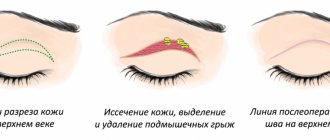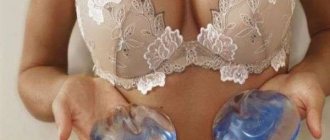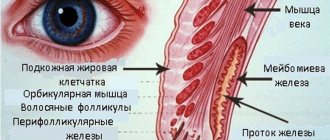When might an episiotomy be needed?
Today, only one in seven births require an episiotomy. An episiotomy is performed in the second stage of labor, once you start pushing the baby out and are very close to giving birth.
It is carried out if:
- the baby appears to be in fetal distress (that is, has a significantly increased or decreased heart rate and there is a real risk to the life or well-being of the baby if it is not born quickly)
- the doctor must use forceps or ventuose and this requires more space
- the baby is not born head first (that is, breech or face presentation)
- you had a long labor and you are tired
- big baby
- You have a serious health condition and if you don't push the baby out quickly, it could endanger your health.
How will we sew it up?
Depending on the severity, the doctor will suggest a type of pain relief: local anesthesia (Novocaine or Lidocaine) or short-term intravenous anesthesia (extremely rare and in particularly severe cases).
Then he will compare the soft tissues using sutures.
We won’t go into details; this is an unpleasant topic.
Most often, self-absorbable threads are used; they do not require the removal of sutures. The suture can be continuous - one knot at the beginning, the second at the end of the wound, and can consist of separate stitches. The most pleasant option for external seams is a cosmetic seam. It passes inside the soft tissue and does not show the needle entry and exit marks, as with conventional sutures.
The procedure for suturing and episiotomy is quite painful and unpleasant. This pain, like labor pain, is quickly forgotten, as Mother Nature intended.
Another thing is that in the postpartum period, sutures cause significant discomfort to the mother.
Despite this, women note that they will happily go to the next birth - the happiness of motherhood is the brightest experience in a mother’s life.
How can I avoid the need for an episiotomy?
Perineal massage in the prenatal period. This is a way to help gently stretch and soften your perineum, preparing it for birth. Research has shown that perineal massage in the last five to six weeks of pregnancy reduces the likelihood of tearing, the need for an episiotomy, and pain in women who have not previously given birth vaginally.
During labor, it is important to remain as relaxed as possible in order to push the baby out without the need for intervention. Try different breathing techniques and birthing positions.
Technique of conducting and suturing
Episiotomy and perineotomy are performed using surgical scissors. Usually no anesthesia is required, but if necessary, infiltration anesthesia can be used. In this case, the site of the intended incision is injected with an anesthetic solution.
The dissection is carried out in 2 stages:
- Outside of pushing, the doctor or midwife, under finger control, inserts the blunt end of the scissors between the vaginal wall and the presenting part of the child's body.
- At the moment of contraction, when the woman is pushing, the tissue of the perineum is dissected - at this moment it is maximally tense. The length of the incision should not be less than 3 cm and no more than 5 cm.
At the time of the incision, the midwife must hold the fetal head to prevent a rapid birth.
After the baby has been born using an episiotomy, the next step is stitching or raffia. Sutures are applied in layers with tissue matching. At this stage, the use of anesthesia is mandatory. More often - local infiltration; sometimes, with concomitant soft tissue ruptures, general anesthesia may be required.
Internal sutures are applied using self-absorbable suture material; for external sutures, non-absorbable threads can be used.
How long does it take to heal?
To heal, your stitches should dissolve and the pain should improve within a month. By six weeks you should be sitting much more comfortably. To help your episiotomy heal faster:
- Keep it clean – You'll be wearing maternity pads for the next six weeks or so, but make sure you change them regularly to avoid infection.
- Let the air get to it - after a shower or when possible, lie down on a towel and let the air get to the area to help with healing.
- Sit on an ice pack – Wrap the freezer bag in a clean cloth or tea towel and then apply or sit on the area for a while to help reduce swelling and pain.
- Start pelvic floor exercises – this may be the last thing you want to do, but squeezing the muscles there can help get oxygen into the area and help with healing and tightening things up after birth.
Proper care
While the young mother is in the maternity hospital, the perineal area is examined daily by an obstetrician, and a nurse treats it with hydrogen peroxide and potassium permanganate twice a day.
After a properly performed episiotomy, the suture does not hurt and does not cause discomfort when visiting the toilet. Complications (for example, hematomas or inflammation) develop for two reasons: errors during the operation or improper care. Normally, the suture heals completely in 2 weeks, and many mothers stop noticing it already in the maternity hospital. The main rule of care after an episiotomy is hygiene. After any visit to the toilet (including small ones), it is important to carefully wash yourself with a soft intimate gel so that particles of urine and feces do not fall on the suture area. It is better to change postpartum pads more often, approximately every 3 hours - bacteria actively multiply in them. After washing, you need to lie down periodically, leaving the perineal area open to allow the skin to “breathe.” A “big” toilet is a particular concern for young mothers. You can and should do it whenever you want. During normal bowel movements, the suture will not come apart; this can only happen with severe straining, improper suture application, or postoperative complications. If a woman does not have bowel movements for 2-3 days, the doctor will prescribe a laxative so that she does not have to strain.
Another important rule is that after an episiotomy you should not sit on a hard surface so that the suture does not experience pressure. There are different options for solving this problem: sit sideways on one buttock, place a soft child's toilet seat on a chair, or a special crotch bed - these are sold in orthopedic stores. You can breastfeed your baby reclining or lying down (episiotomy does not affect lactation in any way). As soon as the sitting position ceases to cause discomfort, and often this happens within 5-7 days after birth, the woman will be able to settle down as usual.
The young mother will be told how to treat the sutures upon discharge from the hospital - it depends on the woman’s condition. Sometimes doctors limit themselves to antibacterial sprays such as Miramistin, sometimes they add suppositories to normalize the vaginal microflora. It is advisable to examine the perineal area using a mirror - this will help you understand the condition of the seam and monitor for any negative changes. You should immediately contact a gynecologist if you experience pain, discomfort or a strong smell of discharge - this is a sign of inflammation in the vagina. When bleeding has completely stopped (usually 4-6 weeks after birth), be sure to see a doctor and make sure the stitch is in good order before resuming sexual activity.
After an episiotomy: will it sting when you go to the toilet?
The idea of going to the bathroom after an episiotomy is not something that is easy to understand. You will most likely be afraid to do this the first time.
Unfortunately, it will sting at first, but there are a few tips to help you:
- Take a deep breath and then exhale as you pee
- Pour some clean, warm water onto the outer area of your vagina when you urinate to help with the burning sensation
- By squatting rather than sitting on the toilet, you can change the angle of your urine so it doesn't come into contact with your stitches
- Some doctors even recommend peeing in a warm shower to make it more comfortable.
How to go to the toilet after an episiotomy?
If the thought of peeing after an episiotomy is hard, then what about going big.
The most common thing to worry about is that the push will somehow rip your stitches. This isn't really possible, so with that in mind, here are some helpful tips to help you through the process:
- If you pee first, squat down before sitting down.
- Take a maternity pad, fold it in half and (without the sticky part) use it to apply gentle pressure and protect your stitches while you poop
- Be careful when you wipe to avoid transferring bacteria
- If you're constipated and really having trouble passing, ask your doctor about using a laxative to soften your stools.
Health - medical portal of Azerbaijan
The process of childbirth and the happy moments of motherhood are sometimes complicated by the fact that a woman’s vaginal vestibule is smaller than the fetal head, as a result of which spontaneous uncontrolled ruptures can occur. In such cases, obstetrician-gynecologists use episiotomy - dissection of the perineum.
In what cases do doctors perform an episiotomy? Today we will talk about episiotomy. This is a procedure that helps during childbirth. In fact, the term is not entirely correctly interpreted, because any dissection of the perineum, be it medial or lateral, is colloquially referred to as an episiotomy. Based on medical terminology, the median dissection of the perineum from the lower commissure towards the anus is called perineotomy. And this is the correct name, but somehow the word episiotomy has become more entrenched in our country. Firstly, when the fetal head is larger than the vestibule of the vagina itself. When tissue tension occurs in this area, when there is a threat of spontaneous uncontrolled rupture, obstetricians-gynecologists use this technique. Starting from the lower commissure, an incision is made towards the anus, and in some schools (for example, the Otto School of Gynecologists) it is directed to the side when reaching the anus, because the fetal head can go a little faster and, accordingly, it can be a little larger than we initially assume. This can lead to ruptures going to the walls of the rectum, to the rectal sphincter. For these purposes, a lateral incision from the anus is justified and provides a good opportunity for the fetus to be born absolutely healthy. The second case is when the incision is made not only to save the woman’s perineum. An uncontrolled rupture of the perineum leads to the disruption of the anatomical integrity - in contrast to a surgical incision, from an episiotomy to the same perineotomy, where the edges remain even, smooth and after their adaptation, suturing, usually heals by primary intentions and returns to almost 100% of everything conversely, then spontaneous ruptures have the form of flaps, their integrity, restoration, even anatomical integrity does not always lead to a good result, not only functional, but also aesthetic. The second is directly caring for the child. During the period of expulsion of the fetus, in order to avoid fetal hypoxia, in these cases our obstetricians decide to go for perineotomy or episiotomy, depending on where the tension is greater. This procedure should not be abandoned under any circumstances. This is done according to indications and, accordingly, it helps both you and the child. Sometimes during consultations women say: “Everything was violated there, everything was sewn up wrong for me,” or other complaints. In these cases, I say: “Look at your baby, you are alive and well, and everything was done for him and for you. And the fact that healing does not always happen well does not mean the qualifications of the doctors. In any case, they do it all only for the good.” This procedure is not always necessary. This is usually done in primiparous women; this is done in elderly primiparas when there are changes in tissue elasticity; this procedure is performed with a high perineum, that is, when the distance from the anus to the lower commissure is high, in these cases it can also be assumed that there will be an episiotomy or, more precisely, a perineotomy. In some cases, if certain procedures have already been performed on the perineum: either post-traumatic, or some kind of reconstructive, plastic surgery on the perineum, obstetricians and gynecologists do a lot in order to avoid these ruptures. They are motivated to preserve the perineum. There are several techniques for this. For example, holding the head so that there is no rapid labor, to allow the perineum to expand, respectively, there are a number of other signs that can preserve the perineum as much as possible. In the first months after childbirth, nature has built enormous regenerative capabilities into a woman’s body. Accordingly, during this period any wounds heal very well, especially in the birth area. It happens that mothers do not have the leisure to care for the wound, or some kind of infection occurs, that is, the healing process itself becomes more complicated, and in these cases complications may arise. But in the majority of cases, everything heals well and neatly, and the girls do not remember this in the future. How can you change the situation if healing after an episiotomy is unsuccessful? The process of childbirth itself and simply the happiest moments of a woman - moments of motherhood, they, unfortunately, do not always happen wonderfully and well. There are complications such as cicatricial deformation of the perineum, changes in the geometry of the perineum. This is all absolutely solved surgically. Even a girlish appearance is completely restored, and not just an aesthetic problem is solved, but also a functional one. If this is accompanied by an increase in the volume of the vagina or urinary incontinence, or, accordingly, further incontinence of feces or gases, then, accordingly, special, improved methods that have been proven for hundreds of years are carried out, which lead to an absolutely prenatal state. So, women, don’t worry, put yourself in the hands of obstetricians and gynecologists so that the baby is born healthy, and so that everything is fine with you too. All doctors are motivated by the health of the child and your personal health. Genital plastic surgeries occupy a niche between plastic surgery and gynecology. And, accordingly, the biggest problem is to find a specialist who would have the skills of plastic surgery and would know well the anatomy, functionality and structure of not only the external, but also the internal genital organs. Because very often it is necessary to solve several problems at once in one operation, not only external, but also internal, which are accompanied by plastic surgery of the vaginal walls. For example, loop surgeries for urinary incontinence, cervical surgeries or direct fixation of the uterus. That is, several problems are solved at once in one anesthesia. In addition, during the operation, the aesthetic side is formed at the entrance to the vagina. If there was an episiotomy, as a classical concept, lateral incisions, if the labia minora are changed, the labia majora are deformed, then this is restored. And the perineum is restored in exactly the same way. The perineum is restored in several ways. First of all, the scars are excised, and secondly, the perineum is not simply raised, starting from the anus, to make it higher, more natural, but, accordingly, plastic surgery is performed after excision, so that it begins, as in girlhood, with the growth of the labia minora. All cuts, all seams are inside. Again, a very important point is not so much the operation itself, but the postoperative period. Everything heals well in this area, but the only thing it requires is a) discipline from the patient and b) local treatment of wounds, which precludes further use, for example, of antibiotics or any other physical or other procedures. Just take care and don’t put stress on this area. Within a month and a half, all this heals, an adequate, but at the same time gentle scar is formed.
www.bakumedinfo.com
Sex after episiotomy
Wait six weeks before being examined so your doctor can make sure it has healed. When you're ready to have sex, it may be uncomfortable at first, but it will get better over time. There should be no long-term pain associated with the episiotomy.
On the Vikids platform you can:
Read similar articles
on the forum
Find medical institutions
We can fix everything
A quick recovery after an episiotomy depends on the quality of this operation by the doctor and proper care of the suture, which must be performed by the woman herself. In this case, the young mother will not have any problems with the scar in the future: for example, discomfort during sexual intercourse. If discomfort persists, see a gynecologist. Even “severe” perineal scars are now successfully treated with physiotherapy or surgical correction.
More useful materials for expectant mothers - in our channel on Yandex.Zen










